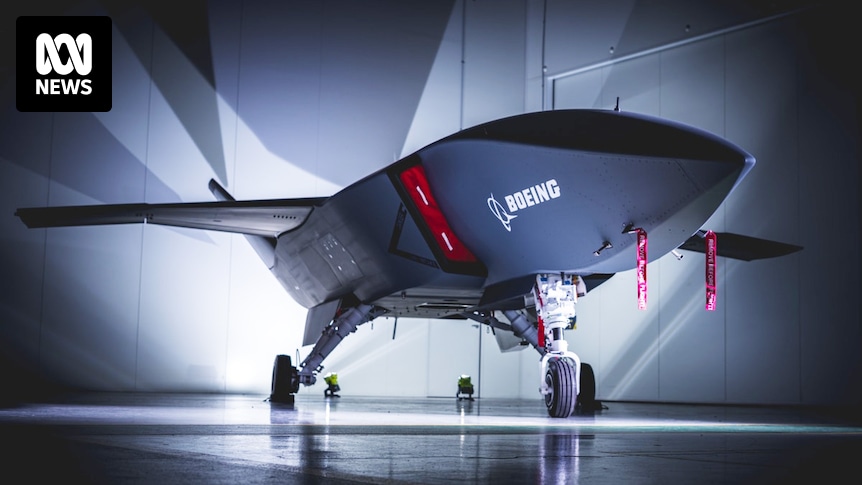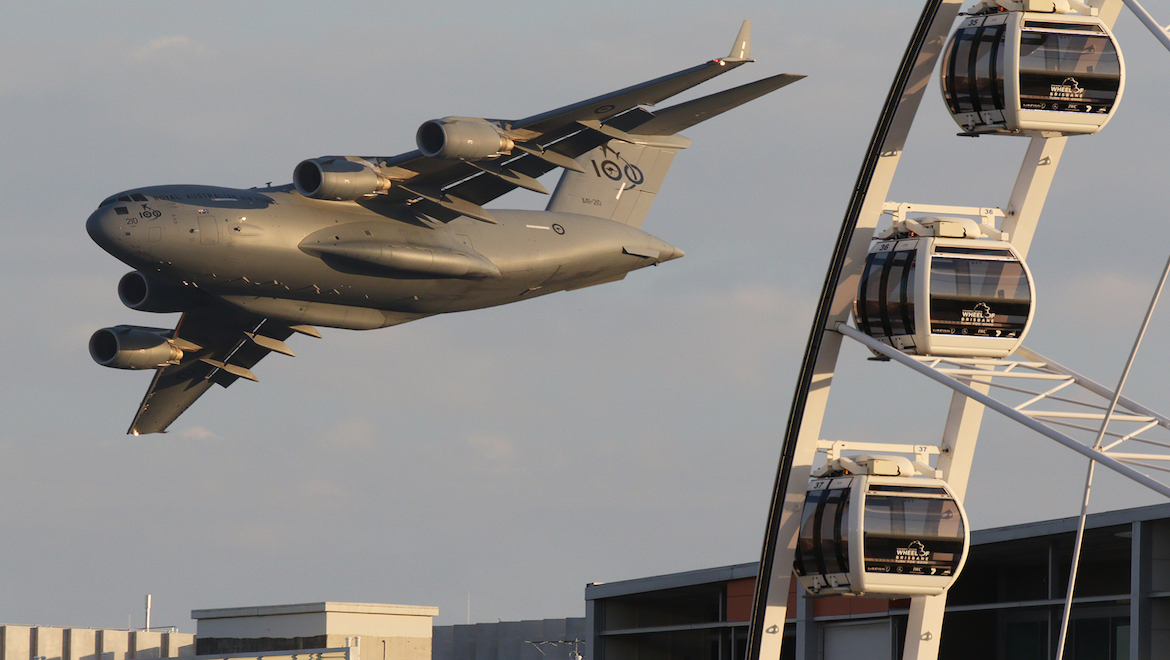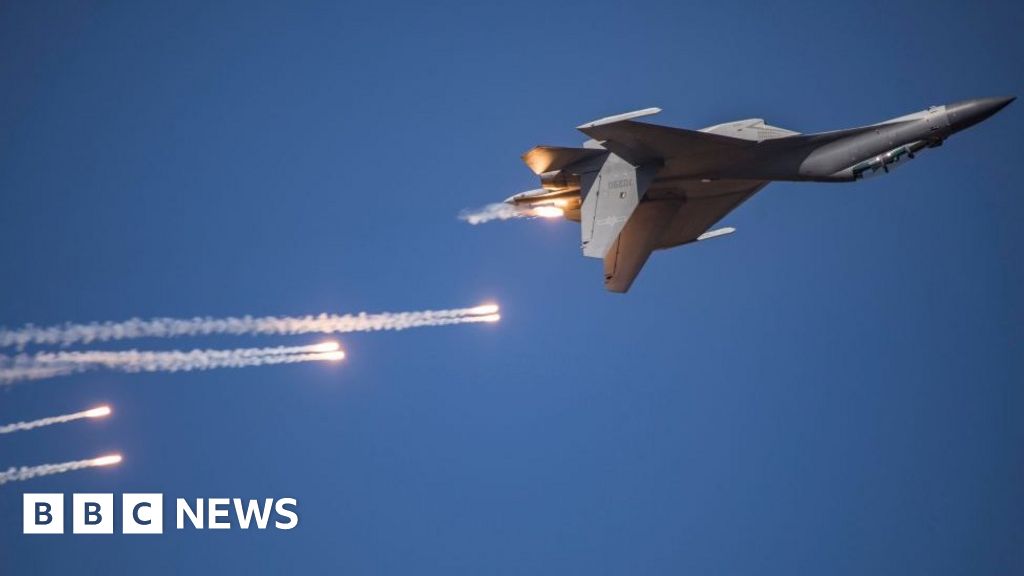Royal Australian Air Force [RAAF] News, Discussions and Updates
Yes, Israeli Patriot batteries have successfully engaged multiple Syrian tactical aircraft including SU-24 and SU-22 aircraft. US, Saudi and Israeli Patriot systems have successfully engaged multiple UaV / drone aircraft and missiles, including short, medium and long ranged ballistic missiles. Not sure about an actual operational cruise missile intercept, but there is some overlap in the descriptions of missiles and drones sometimes, so it may have.Has patriot ever shot down an enemy fighter or cruise missile?
Boagrius
Well-Known Member
I'd add that there is Patriot and then there is Patriot these days. The system we would end up with would have little in common with the system that went to GW1, or even the one that fell short in Abqaiq. Better sensors, better effectors, better networking... better everything.
Off the top of my head a solution based around PAC3 MSE and Skyceptor ala the Polish Wisla deal ought to tick the boxes. Then jump on LTFI if and when it materialises. Sounds like they might throw in a CEA GaN AESA in lieu of LTAMDS which is fine so long as it doesn't hold things up. Time is not abundant for us here.
Solid potential to build both effectors domestically, and to piggyback onto the emerging THAAD-ER/GB-SM-6 pathway for the anti-BM/HCM/HGV system later on. The US already seems to be aggressively pursuing extensive integration work in this space.
Off the top of my head a solution based around PAC3 MSE and Skyceptor ala the Polish Wisla deal ought to tick the boxes. Then jump on LTFI if and when it materialises. Sounds like they might throw in a CEA GaN AESA in lieu of LTAMDS which is fine so long as it doesn't hold things up. Time is not abundant for us here.
Solid potential to build both effectors domestically, and to piggyback onto the emerging THAAD-ER/GB-SM-6 pathway for the anti-BM/HCM/HGV system later on. The US already seems to be aggressively pursuing extensive integration work in this space.
The tender docs available on Austender require bidders to cost including CEAFAR AESA radars with their C4I system and effectors. Doesn’t mean they will opt for it, but it’s being considered.I'd add that there is Patriot and then there is Patriot these days. The system we would end up with would have little in common with the system that went to GW1, or even the one that fell short in Abqaiq. Better sensors, better effectors, better networking... better everything.
Off the top of my head a solution based around PAC3 MSE and Skyceptor ala the Polish Wisla deal ought to tick the boxes. Then jump on LTFI if and when it materialises. Sounds like they might throw in a CEA GaN AESA in lieu of LTAMDS which is fine so long as it doesn't hold things up. Time is not abundant for us here.
Solid potential to build both effectors domestically, and to piggyback onto the emerging THAAD-ER/GB-SM-6 pathway for the anti-BM/HCM/HGV system later on. The US already seems to be aggressively pursuing extensive integration work in this space.
AIR-6502 Phase 3 is what you’re looking for, for the future High Speed Air defence system…
Boeing plans to build military drones in regional Queensland
Boeing announces plans to build a manufacturing facility for unmanned military aircraft near Toowoomba in a deal that could create more than 300 jobs across regional Queensland.
For those who aren't aware, Wellcamp (aka Brisbane West Airport) is west of Toowoomba about 120km from Brisbane, and capable of handling 747 and larger freight aircraft.
More sign that increased Defence spending can be a real positive for manufacturing here rather than overseas.
oldsig
Redlands18
Well-Known Member
People need to remember though that Loyal Wingman is only a proof of concept at this stage with years of testing in front of it, there is no commitment from the RAAF to purchase any Aircraft at this stage. Funding for the Teaming Air Vehicle program is not due to kick in until 2025-26.
Boeing plans to build military drones in regional Queensland
Boeing announces plans to build a manufacturing facility for unmanned military aircraft near Toowoomba in a deal that could create more than 300 jobs across regional Queensland.www.abc.net.au
For those who aren't aware, Wellcamp (aka Brisbane West Airport) is west of Toowoomba about 120km from Brisbane, and capable of handling 747 and larger freight aircraft.
More sign that increased Defence spending can be a real positive for manufacturing here rather than overseas.
oldsig
John Newman
The Bunker Group
Whilst the Teaming Air Vehicle project is certainly still a few years away, I think the Government is pretty ‘fair dinkum’ about the project, budget allocation is $7.4b-$11b, not exactly just beer money.People need to remember though that Loyal Wingman is only a proof of concept at this stage with years of testing in front of it, there is no commitment from the RAAF to purchase any Aircraft at this stage. Funding for the Teaming Air Vehicle program is not due to kick in until 2025-26.
I don’t know that I’d label Loyal Wingman as just a proof of concept, with six airframes being built, they may be better being labeled as prototypes, though I can easily envisage a number of different size airframes using the technology at its core.
As for Boeing, they must have a fair bit of confidence in the project by going ahead now with planning for construction of an assembly facility.
Cheers,
It occurs to me that Australia does have quite a history in this sort of project.
The Jindivik was a radio controlled drone built back in the 1950s. We eventually built 500 of them.
In fact we even had an optionally manned version called the Pika ... there's your 6th generation technology right there.
The Jindivik was a radio controlled drone built back in the 1950s. We eventually built 500 of them.
In fact we even had an optionally manned version called the Pika ... there's your 6th generation technology right there.
Not sure how they’re going to manage operating drones out of there, if they plan on it. There is a huge amount of traffic around Wellcamp. It’s capacity to operate heavy jets is very weight limited; I fly there a few times a year in heavy jets.
Boeing plans to build military drones in regional Queensland
Boeing announces plans to build a manufacturing facility for unmanned military aircraft near Toowoomba in a deal that could create more than 300 jobs across regional Queensland.www.abc.net.au
For those who aren't aware, Wellcamp (aka Brisbane West Airport) is west of Toowoomba about 120km from Brisbane, and capable of handling 747 and larger freight aircraft.
More sign that increased Defence spending can be a real positive for manufacturing here rather than overseas.
oldsig
But isn’t the whole Wellcamp airfield concept supposedly to be used for freight and I would assume a fully loaded freighter would be much heavier than a pax jet?Not sure how they’re going to manage operating drones out of there, if they plan on it. There is a huge amount of traffic around Wellcamp. It’s capacity to operate heavy jets is very weight limited; I fly there a few times a year in heavy jets.
Isn't YBWW able to meet Code E ICAO requirements?Not sure how they’re going to manage operating drones out of there, if they plan on it. There is a huge amount of traffic around Wellcamp. It’s capacity to operate heavy jets is very weight limited; I fly there a few times a year in heavy jets.
FormerDirtDart
Well-Known Member
I see it's that time of year again. Always a thrilling sight, along with colorful local commentary
LOL
LOL
Redlands18
Well-Known Member
I see it's that time of year again. Always a thrilling sight, along with colorful local commentary
LOL

Photos: RAAF Globemaster flies just 300 feet above Brisbane River
Australian Aviation photographer Craig Murray captured these incredible shots of a RAAF C-17 Globemaster III performing its planned flyover of the Brisbane CBD.
 australianaviation.com.au
australianaviation.com.au
Redlands18
Well-Known Member
Australia cleared to purchase one (1) EA-18G Growler from the USN, it will be from Lot 38 or later. This sounds very much like a used USN Aircraft.
The following was reported by the BBC of a recent incursion into Taiwan's defence zone by Chinese aircraft.
"Taiwan's defence ministry said 20 Chinese aircraft came during the day on Saturday with a further 19 entering the area during the evening".
Without getting into the Geo Political, I was wondering what sort of aircraft numbers would the RAAF be looking at to mount such a force to a commensurate distance.
Taiwan is only about 250km away so inflight refueling would not be necessary.
Any idea what sort of numbers required to provide the availability of say that first group of 20.
My understanding is that a Frontline Sqn such as that at Tindal would have around 16 / 17 aircraft to provide around 12 to ready go.
Realistically those numbers are not for a one off expeditionary group, but rather provide smaller Flights / sections of aircraft for 24 / 7 coverage and tasking depending very much on the mission at hand.
The remainder are in short to long term maintenance at base.
I'd envisage getting 20 fighters in the air at one time looks like a very big undertaking.
Would appreciate any thoughts and input.
Regards S
@Stampede You should have posted the link to the BBC story. No pudding for you.
Ngatimozart.

"Taiwan's defence ministry said 20 Chinese aircraft came during the day on Saturday with a further 19 entering the area during the evening".
Without getting into the Geo Political, I was wondering what sort of aircraft numbers would the RAAF be looking at to mount such a force to a commensurate distance.
Taiwan is only about 250km away so inflight refueling would not be necessary.
Any idea what sort of numbers required to provide the availability of say that first group of 20.
My understanding is that a Frontline Sqn such as that at Tindal would have around 16 / 17 aircraft to provide around 12 to ready go.
Realistically those numbers are not for a one off expeditionary group, but rather provide smaller Flights / sections of aircraft for 24 / 7 coverage and tasking depending very much on the mission at hand.
The remainder are in short to long term maintenance at base.
I'd envisage getting 20 fighters in the air at one time looks like a very big undertaking.
Would appreciate any thoughts and input.
Regards S
@Stampede You should have posted the link to the BBC story. No pudding for you.
Ngatimozart.

Taiwan says dozens of Chinese planes entered defence zone
Taiwan says 39 jets flew into its defence zone on Saturday, marking the largest incursion yet.
www.bbc.co.uk
Last edited by a moderator:
Anthony_B_78
Active Member
Not many really because it doesn't say the Chinese sustained such a force in the air, does it? Twenty flew in a wave during the day. So, you know, maybe the equivalent of two squadrons. And the same squadrons could have repeated the move in the evening.Any idea what sort of numbers required to provide the availability of say that first group of 20.
It's difficult to figure out how many aircraft the PLAAF could bring to a fight, which is what I imagine you're wondering about? Looking it up, I was actually surprised they don't have more aircraft than they do. The big unknowns though are what their availability is like, and how they are distributed around what is a large country, with perceived threats on a few fronts.
I've mentioned - and sourced - this ratio before, but for your interest, apparently for every three operational aircraft you need another three - one at squadron level maintenance, one for deeper maintenance / attrition reserve, and one for conversion (that is, the two-seat version, usually).
So if you look at, say, the J-11, they reportedly have 450, which would equate to maybe 18-19 squadrons, each able to put 12 aircraft in the air. The standard is supposedly two sorties a day per aircraft. If 12 squadrons were engaged in a campaign against Taiwan, that might mean 288 sorties a day, just for that type, which they could sustain - depending on losses and how good they are at keeping aircraft serviceable - for some time. And, of course, that's just one type.
The kind of intimidation and testing the PLAAF is doing of Taiwan's air defences could, it would seem, be ramped up, and it would make Taiwan nervous because they wouldn't be able to put too many aircraft up in response to these intrusions.
Trouble is we really don't know the actual combat aircraft strength of the PLAAF, PLANAF, and the output of the combat aircraft production facilities. It is difficult to find verifiable open source data apart from what may appear in various US Congress reports. Even the SIPRI data is at best qualified. We could be underestimating or overestimating their quantity. Now as to Sqn strength km do they have a Sqn strength of 12 aircraft?Not many really because it doesn't say the Chinese sustained such a force in the air, does it? Twenty flew in a wave during the day. So, you know, maybe the equivalent of two squadrons. And the same squadrons could have repeated the move in the evening.
It's difficult to figure out how many aircraft the PLAAF could bring to a fight, which is what I imagine you're wondering about? Looking it up, I was actually surprised they don't have more aircraft than they do. The big unknowns though are what their availability is like, and how they are distributed around what is a large country, with perceived threats on a few fronts.
I've mentioned - and sourced - this ratio before, but for your interest, apparently for every three operational aircraft you need another three - one at squadron level maintenance, one for deeper maintenance / attrition reserve, and one for conversion (that is, the two-seat version, usually).
So if you look at, say, the J-11, they reportedly have 450, which would equate to maybe 18-19 squadrons, each able to put 12 aircraft in the air. The standard is supposedly two sorties a day per aircraft. If 12 squadrons were engaged in a campaign against Taiwan, that might mean 288 sorties a day, just for that type, which they could sustain - depending on losses and how good they are at keeping aircraft serviceable - for some time. And, of course, that's just one type.
The kind of intimidation and testing the PLAAF is doing of Taiwan's air defences could, it would seem, be ramped up, and it would make Taiwan nervous because they wouldn't be able to put too many aircraft up in response to these intrusions.
The PLA is following a western style of force structure and if you look at the PLA-GF they have a similar structure to the US Army. I would then very strongly suspect that the PLAAF will have a similar force structure to that of the USAF, so their fighter sqns could very well have upwards of 18 - 24 aircraft each. The PLA has definitely forsaken the Soviet Russian model ever since Gulf War 1 and probably the hiding that the Vietnamese gave them around 1979. The Vietnamese certainly wouldn't be able to do it now.
WRT their quality. They haven't been in real combat since the 1979 hiding, so any institutional memory is failing. The PLAAF and PLANAF don't have any modern combat experience that we are aware of. So they have had to read books, papers, watch videos, and obtain as much intelligence as possible, in order to obtain as much information that they can in order to simulate modern aerial combat. This includes C5ISR, everything and meld it all into a viable workable system. The real problem they have is that they don't know how well it will work in a real war situation. It could be really good, or it could be absolute rubbish. They don't have any friends who they can trust, who has real world air combat experience that would be able to help them.
That doesn't mean that they will be easy beats and it will one sortie then home for tea and medals. Far from it because the last thing we can afford to do is to underestimate them and disrespect their abilities. That's what caused MacArthur to lose the Philippines and the Poms to lose both Hong Kong and Singapore during WW2.
What the PRC is doing to Taiwan is grey war tactics designed to wear down the Taiwanese defenders, wear out their aircraft, and acclimatise them to PLA combat aircraft in the Taiwanese ADIZ so that it becomes routine. That will numb the Taiwanese into a false sense of security and the CCP is working on the principle that the world will sicken of the Taiwanese crying wolf all the time; until one day it's too late. IMHO the FVEY group and other nations should guarantee Taiwan's security, defence, and freedom to choose its own future. If the PRC don't like that, how sad, to bad, never mind.
Seems to me that if they felt it necessary to replace a single aircraft then maybe they need to consider getting a few extra attrition spares or perhaps convert some of the prewired super hornets.Australia cleared to purchase one (1) EA-18G Growler from the USN, it will be from Lot 38 or later. This sounds very much like a used USN Aircraft.
Anthony_B_78
Active Member
I doubt spares are a big part of the calculation really. They’d have an operational capability they want and then they’d be thinking about how many aircraft to sustain that. That one fewer aircraft means more hours racked up on the other 11, which might be an issue over time.Seems to me that if they felt it necessary to replace a single aircraft then maybe they need to consider getting a few extra attrition spares or perhaps convert some of the prewired super hornets.
Anthony_B_78 is correct.
When I worked for the Flying Kanga, spare parts were classified as Cyclic, Repairable and Expendable.
Cyclic spares stay on the aircraft until a pre-determined number of cycles (generally a take-off and landing but could be flying hours) are achieved or there is a pre-mature failure then they are removed and repaired.
Repairable items were not governed by explicit cycles but were parts that had regular inspection and if it looked a part might be deteriorating it would be pulled from the aircraft and repaired. Similar to checking your car and seeing a leak around the master cylinder so you go out and buy a seal kit.
Expendable parts are just that – if they fail there’s no repair so the part is disposed off.
I don’t know how the RAAF categorize their parts inventory, but it seems likely it wouldn’t be a million miles away from Qantas in that when an aircraft goes off line then other planes take on a heavier load with the attendant additional wear and tear on aircraft components.
When I worked for the Flying Kanga, spare parts were classified as Cyclic, Repairable and Expendable.
Cyclic spares stay on the aircraft until a pre-determined number of cycles (generally a take-off and landing but could be flying hours) are achieved or there is a pre-mature failure then they are removed and repaired.
Repairable items were not governed by explicit cycles but were parts that had regular inspection and if it looked a part might be deteriorating it would be pulled from the aircraft and repaired. Similar to checking your car and seeing a leak around the master cylinder so you go out and buy a seal kit.
Expendable parts are just that – if they fail there’s no repair so the part is disposed off.
I don’t know how the RAAF categorize their parts inventory, but it seems likely it wouldn’t be a million miles away from Qantas in that when an aircraft goes off line then other planes take on a heavier load with the attendant additional wear and tear on aircraft components.

